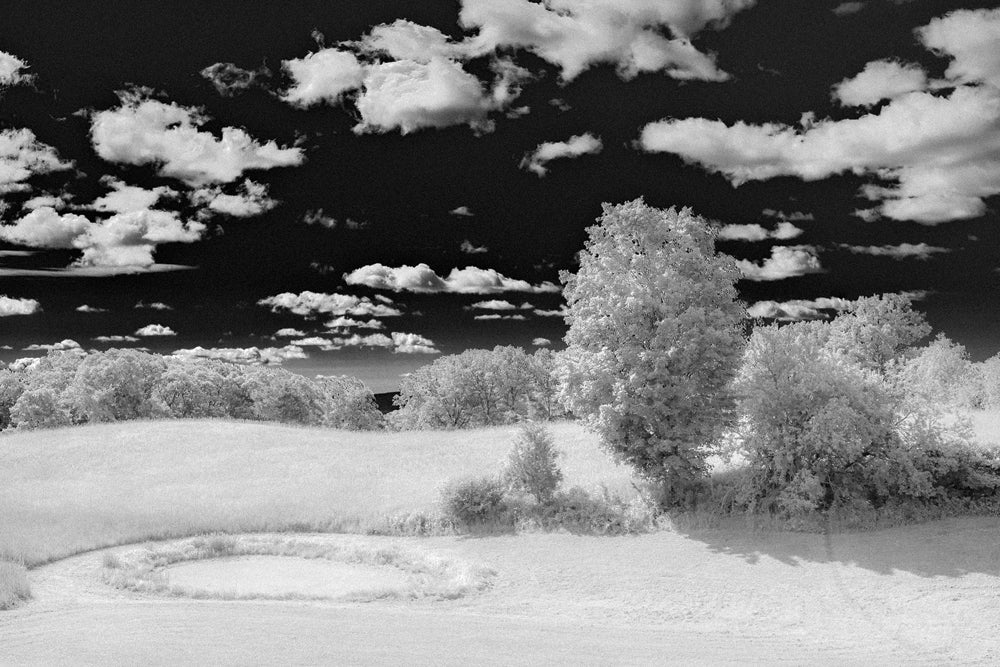Hi,
I am currently using a Fuji XPRO1 with an R72 infrared filter to simulate B&W infrared photography. By that I mean green foliage that goes almost white and blue skies that go almost black.
I have a couple of questions.
First, is there any advantage to using the R72 filter in order to get B&W infrared effect. I ask this because I use the technique described by Debbie Grossman here :

 www.popphoto.com
www.popphoto.com
The technique use a unfiltered RAW file, it converts to HSL grayscale, then adjusts the blue to -100, the green and yellow to +100. The effect is not bad. Look at the the B&W image at the bottom of this post.
So the question is what is the advantage of shooting with the R72 filter?
Here is the Fuji Image, how do I process this in a RAW editor to make the greens go white and the sky darken?
RAW file shot with R72
Here is an example of an unfiltered RAW file modified using the method described by Debbie Grossman above:
RAW file shot unfiltered and converted
I also notice the Fuji lens doesn't have a hot spot as others have mentioned, any idea why?
I am currently using a Fuji XPRO1 with an R72 infrared filter to simulate B&W infrared photography. By that I mean green foliage that goes almost white and blue skies that go almost black.
I have a couple of questions.
First, is there any advantage to using the R72 filter in order to get B&W infrared effect. I ask this because I use the technique described by Debbie Grossman here :

Software Workshop: Fake Infrared Photography Using Adobe Camera Raw
Get the new black-and-white infrared look by using clever RAW conversion settings
The technique use a unfiltered RAW file, it converts to HSL grayscale, then adjusts the blue to -100, the green and yellow to +100. The effect is not bad. Look at the the B&W image at the bottom of this post.
So the question is what is the advantage of shooting with the R72 filter?
Here is the Fuji Image, how do I process this in a RAW editor to make the greens go white and the sky darken?
RAW file shot with R72
Here is an example of an unfiltered RAW file modified using the method described by Debbie Grossman above:
RAW file shot unfiltered and converted
I also notice the Fuji lens doesn't have a hot spot as others have mentioned, any idea why?











